A SWALLOW's TALE
Roger Wardale

|
Arthur Ransome's legendary Swallow dinghy was built by Francis Crossfield at his boatyard in Arnside shortly before WWI.1 Ransome's affectionate description of the dinghy in Swallows and Amazons could scarcely be bettered, so I will not even try. Shortly after publication, he went so far as to say, '... a fast little boat and a steady little boat, in fact the best little boat that ever was built.'2
It is generally believed that Ernest Altounyan paid £15 apiece when he bought Swallow and Mavis in Barrow in the spring of 1928, with the intention that one of them would become Ransome's at the end of the summer. Swallow became the children's favourite, and when the time came for them to part with one of the dinghies, they generously chose her. Thirty years ago I quizzed the four elder Altounyans and their cousin Tadius about Swallow and Mavis, but only Tadius and Susie had any clear memories of Swallow, although everybody had plenty to tell me about Mavis. When Swallow was sailed by the Altounyans, the halyard was taken forward of the mast thwart and made fast to the centre thwart with a slippery hitch, ready to be instantly released in the event of a squall – a sensible precaution. The sheet led behind one of the pegs driven through the quarter knees (as in the drawing of the captured Amazon in Swallows and Amazons), and part of the stern bench was removable to allow access to a store for bailer, jam jars, tackle and lines, rowlocks, oilskins etc.3 The sail was loose-footed, and was a true brown rather than red-brown in colour with three rows of reef points. The sail was broad with a foot that extended beyond the transom. The patch was also brown but a little lighter. The keel was indeed about 6 inches deep and straight without any rocker, making the boat stable with a following wind.3 Susie Atounyan, having her first few lessons aboard, found Swallow an easy boat to sail, unlike a 'tub' like Mavis.4 Swallow's sheer strake and thwarts were painted a dark colour in Ransome's time. Judging from the photographs, this could be black, but I recall a tiny model in the Ransome collection at Abbot Hall that was dark brown and white, and I think this the more likely colour. Swallow was painted light brown and white in 19284 and was black below the waterline. She never had her name painted on the stern or anywhere else.3 The sturdy little craft was built for fishing in Morecambe Bay. Close study of the photographs taken by Evgenia5 reveals that like many clinker built fishing boats, she had protective battens nailed below the strakes where the nets were hauled aboard, and these are shown in two of Clifford Webb's illustrations ('Discharging Cargo' and a tailpiece)6. Webb was meticulous and even shows the single fairlead at Swallow's bow. 1928Swallow was transported from Coniston to Windermere in the autumn and Ransome's first recorded sail was on October 20th when he took Ted Scott as crew, while their wives went for a long walk.7 Just before Christmas Swallow was taken out of the water and put into Borwick's shed for the winter.8 (Borwicks, the boatbuilders in Bowness Bay, was situated across the road from The Glebe Car Park.)1929Safely in the shed, Swallow was able to dry out ready to be painted for the new season. 'Mavis not a patch on Swallow', Ransome decided after a visit.9 At the end of February, while Windermere was still under ice, he drove over to Lanehead to fetch the bottom boards and other bits and pieces that had been left behind.10 Just as soon as the weather improved, they managed to fit in a few short sails after posting articles or letters in Windermere.11An old motor car engine was sunk, either in Bowness Bay, or more likely Parson Wyke, north of the ferry, in order that Swallow could lie to a little wooden buoy with her name on. After that first winter, Ernie Walker who had a boatyard on the Ferry Nab, looked after Swallow, kept her bailed out in summer and stored under cover for the winter, all for £5 a year. (The area has been developed and the shed is now a holiday home named Walker's Boatyard).12 The first sail that year to feature in a diary was an afternoon expedition to take tea at the Storrs Hall Hotel. The previous day Ransome had been in Leeds and had turned down the editor's request that he should take over as the Manchester Guardian's Berlin correspondent. After a still and misty morning there was enough wind in the afternoon to let them have a gentle sail to Storrs. They had a 'fine' sail back in the dusk passing Ramp Holme, and then Esperance in Parson Wyke.13 I believe that this particular sail was enormously important in the creation of Swallows and Amazons, for on that day he wrote, 'Started S & A. 4 pages'14 and Swallow had become his muse. They sailed regularly during the days that followed, circumnavigating Belle Isle, visiting White Cross Bay, Wray Bay and Rough Holme in the northern basin and Beech Hill and Storrs in the south. Sometimes they arrived back soaking wet after an exhilarating sail and on other occasions they took their cat, Winkle, as a passenger. When he was not busy with 'Rod and Line' articles, leaders and book reviews, Ransome wrote in the morning, averaging around six pages a day, leaving them free to sail in the afternoon, sometimes paddling the last part in the dusk after the wind had fallen away.15 They seem to have relished rough conditions, both on Windermere and later in hired yachts on the Broads. At the end of May they timed themselves from their mooring to the Wateredge Hotel for tea in just under the hour.16 Seen across the river mouth from the hotel is a splendid pine-covered Darian. In Wray Bay they would have noticed a promontory that might have inspired the Beckfoot Promontary. Those who look for Ransome's inspiration could do worse than start off with the landmarks with which he became familiar during the book's creation– Ramp Holme, Esperance, Parson Wyke, Wray Bay and the head of Windermere, mixed of course with the landmarks of his youth – Peel Island and the River Crake. With the coming of spring, Swallows and Amazons gained momentum: 45 pages at the end of March, 141 at the end of April and 253 in mid-May, when the first draft was completed and put away until the winter. The following month Evgenia took the well-known photographs of Swallow that have been frequently reproduced. It seems as if Ransome needed to sail frequently while he was working on Swallows and Amazons, for the diary references to sailing Swallow came to an end. 1930Ransome was far from well and there are few entries in the diaries. Understandably, what written records exist mostly refer to the completion and publication of Swallows and Amazons.The one sailing record is of a passage on the day following the arrival of advance copies, and so must have been something of a celebration. Sailed 2.30 1931When Clifford Webb arrived in April, Ransome sailed Swallow back and forth so that Webb might make sketches.14Swallowdale occupied Ransome throughout the summer and into the autumn, and it seems likely that he only managed a few short trips. The only decent passage that he recorded took place in November. Left moorings 12.20Swallow must have been one of the smallest boats ever put on the Cruising Association Register. In December, Ransome applied for membership, giving as his 'yacht', the 'sailing dinghy Swallow, 13ft.'20 1932The strain of finishing Peter Duck in time for Christmas put an end to regular outings in Swallow during the summer. They did manage to have a fishing expedition with Margaret and Charles Renold when they had tea on one of the Lilies of the Valley Islands.21 Once Peter Duck was safely at the printers, Ransome entered the Royal Windermere Yacht Club's last 'Allcomers' race. It was wet and squally and there was a loud crack from the mast. Very soon after the start they were both soaked to the skin, 'but it was most enjoyable sailing'.221933Ransome visited Crossfields to make arrangements for a new 13 ft dinghy to be built for the Renolds, whom he hoped would take to sailing. At the boatbuilders he talked to Francis Crossfield, now over 80, who had built the Swallow. The cost of the new dinghy without the sail was £21.23In June, Margaret and Charles Renold camped on one of the islands (Ransome does not say which) and were taught to sail in Swallow.24 1934Ransome sailed the new dinghy, now named Coch-y-bonddhu, and beat Swallow by the length of the island in a race around Belle Isle.25It was the end of a love affair. The Renolds decided that they preferred fishing to sailing and so Cocky became Ransome's. In August they raced together in Cocky, but Evgenia was cold and found Cocky, with its centreboard case, too small and did not enjoy herself. The dinghy sailed 'jolly well' in conditions that saw one of the Royal Windermere Yacht Club 17 ft Class yachts dismasted!26 1935Swallow does not seem to feature again in Ransome's papers and some time that year he sold her. Why he did not offer the dinghy to the Altounyans who were still spending their summer holidays at Lanehead is a mystery. Instead, Swallow was bought from Walker's Boatyard by a local lad, Roger Fothergill, who found her exactly as described in Swallows and Amazons, even to the box containing the pigs of ballast amidships. Fothergill, who was aged around 15 at the time, discovered that Swallow steered with an unacceptable amount of weather helm. He fitted a short bowsprit/bumpkin with a bobstay and gave her a jib and reported that the performance was much improved. He took the pigs of ballast and recast them into a single piece that was attached to a ballast keel about 12 inches deep at the stern, rising to 6 inches at the bow. After that he found Swallow made much less leeway.Finding Windermere too confining, Fothergill took Swallow back to Morecambe Bay and sailed until the outbreak of World War II, when he arranged for Crossfields, to sell her.27 In spite of fairly extensive searches, that is the last we know of the iconic Swallow. My guess is that she ended her days as she began, fishing in Morecambe Bay. Roger Wardale, 2014 References1Ransome's diary for 19332Reproduced in Arthur Ransome and Captain Flint's Trunk, Christina Hardyment, 1984, 2006 3Letter to the author from Tadius Altounyan 4Letter to the author from Susie Altounyan 5Evgenia's diary for 1929 6Swallows and Amazons 1931 7Evgenia's diary for 1928 8Ransome's diary for 1928 9Letter to Ted Scott February 1929 10Ransome's diary for 1929 11Letter to Edith Ransome March 1929 12Ransome's notebook 13Evgenia's diary for 1929 14Ransome's diary for 1929 15Ransome and Evgenia's diaries for 1929 16Ransome's diary for 1929 17Ransome's diary for 1930 18Ransome's diary for 1931 19Ransome's diary for 1931 20Reproduced in Ransome at Sea, ed. Roger Wardale, 1995, Amazon Publications 21Evgenia's diary for 1932 22Evgenia's diary for 1932 23Ransome's diary for 1933 24Ransome and Evgenia's diaries for 1933 25Ransome's diary for 1934 26Ransome's diary for 1934 27Letter to the author from Roger Fothergill 1991 |
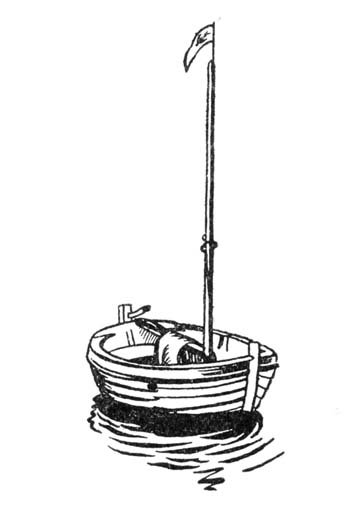
Web's drawing of Swallow 
Web's detail of Swallow's bow 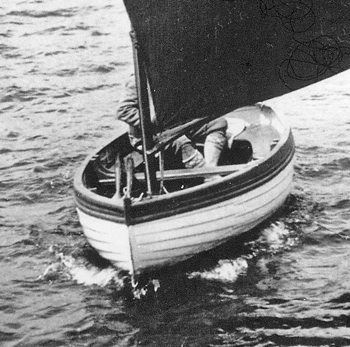
Evgenia picture of Ransome sailing Swallow 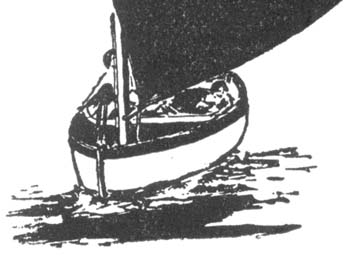
Arthur's pen-and-ink sketch of Swallow compared with Eveginia's photograph 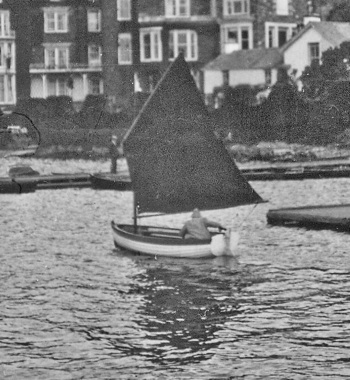
Another of Evgenia's pictures of Ransome sailing Swallow 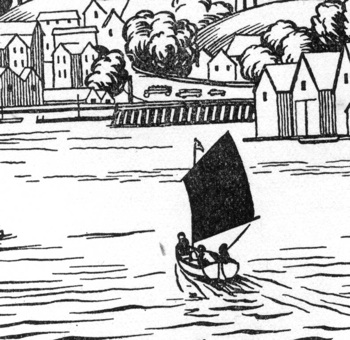
Detail of Clifford Webb's drawing of Swallow in Rio Bay 
Plan of Swallow by Roger Wardale |
|
|
This article originally appeared in the 2014 edition of Mixed Moss, the Journal of The Arthur Ransome Society, and is ©2014 by Roger Wardale. It has been updated by the author and appears on All Things Ransome with his permission. The photographs and illustrations are reproduced with the permission of the Arthur Ransome Literary Executors and Roger Wardale. |